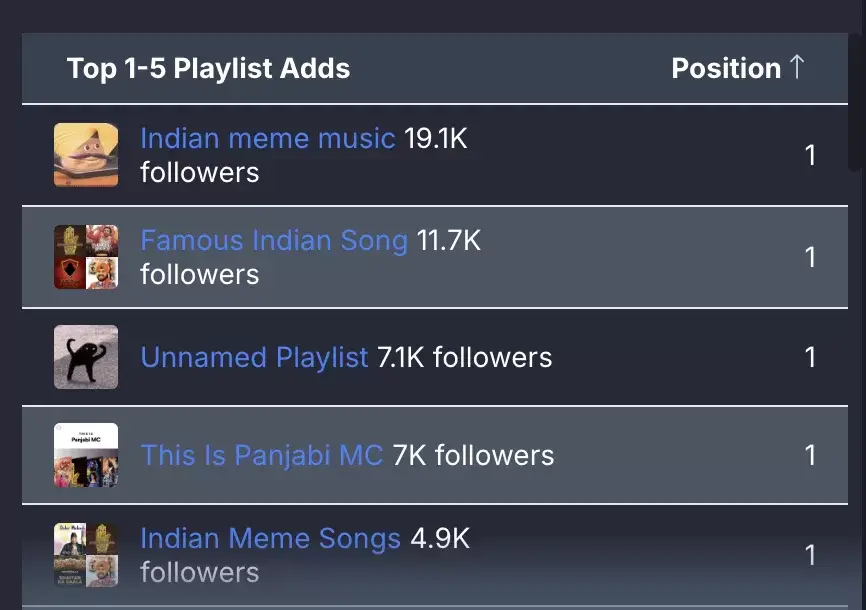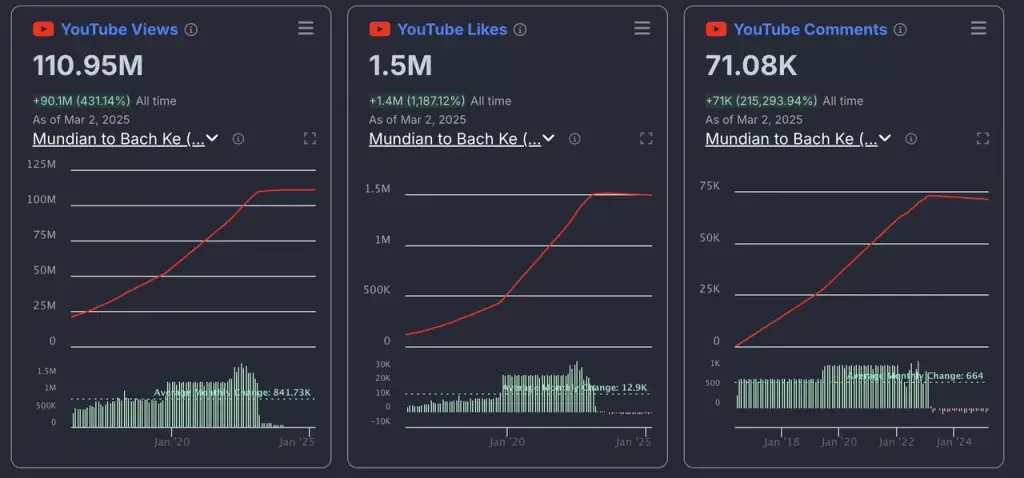Why Does Mundian To Bach Ke Still Go Hard?
Before Algorithms and Virality, One Track Cracked the Code of Infinite Replay.
For over two decades, Mundian to Bach Ke has defied the passage of time. It blares from wedding DJs’ half blown speakers, pulses through underground clubs at 3 AM, resurfaces on Tiktok like an inside joke that refuses to die. And every time, the reaction is inevitable. A knee bounces, a head nods, a shoulder rolls. The body responds before the mind catches up.
This track has existed everywhere. From chaotic house parties to stadium sized victories. It has played in Hollywood car chases, at family functions , inside Berlin nightclubs, and in spaces where no one speaks a word of the language but instinctively knows what to do when the beat drops. Travis Kelce, a man with no prior obligations to Panjabi MC, started dancing on cue at a nightclub in Las Vegas.
Songs from the early 2000s are supposed to live in throwback playlists , but Mundian to Bach Ke moves across decades, continents, and algorithms effortlessly. 23 years later, this song still feels ahead of its time.
But why does it still feel futuristic two decades later?
Is it nostalgia, cultural shorthand, or something deeper?
The Song That Won’t Retire
Mundian to Bach Ke refuses to belong to an era. It serves as a cultural shortcut and a signal for Punjabi energy. The beat drops, and the reaction is automatic. Over time, the song has become synonymous with Indian culture, much like butter chicken and mango lassi. However, the truth is far more complex. India’s soundscape is vast, but in the global pop culture lexicon, few tracks have secured a lasting place like this one.
Even years later, Hollywood keeps reaching for the sound- The Dictator, Slumdog Millionaire and recently another Dev Patel starrer Monkey Man.
Outside celluloid, the track travels seamlessly to football stadiums.

And online streaming numbers confirm the reality-Mundian To Bach Ke has crossed 97 million plays on Spotify, gaining 1.8 million streams in the past month alone, with a steady daily increase of 62.94K. The consistent growth is indicative of sustained listener interest driven by discovery and playlist engagement.
But beyond where the songs are played, the secret sauce to its longevity is how the song is built.
The Science of a Timeless Hit:
Amidst the overproduced pop hits and formulaic club bangers of the early 2000s, Mundian To Bach Ke stood out by seamlessly blending traditional Punjabi folk instrumentation with a hypnotic electronic bassline, creating a track that felt both deeply rooted and globally futuristic.
A song’s longevity often depends on production and some tracks remain untouchable. Music follows patterns, and every track that carves a space in pop culture can be broken down to a science. Beats per minute shape energy. Structure determines adaptability. A song engineered to move across time and genres lasts longer.
BPM (beats per minute) plays a key role in versatility, influencing danceability, commercial appeal, and cross-genre adaptability. Club tracks typically sit between 115–130 BPM, a range that keeps bodies moving effortlessly, yet Mundian To Bach Ke lands at 98 BPM, slightly lower than the club standard but still within a range that feels fast without being overwhelming. Songs between 95–105 BPM sit in a pocket that works across multiple genres, adaptable enough to blend into hip-hop, reggaeton, and club edits without feeling out of place.

With 83.39K SoundCloud streams and a 44,977% increase, DJs and underground remix culture continue to keep the track in rotation, a testament to its adaptability across different styles and settings.
This BPM range lands in the perfect head-nodding rhythm, not too fast for hip-hop, not too slow for the dance floor. Dr. Dre’s Still D.R.E. (94 BPM) and 50 Cent’s In Da Club (103 BPM) both exist within this space, giving DJs the flexibility to adjust tempo without losing the song’s core energy. A track sitting at 98 BPM moves seamlessly between hip-hop (90–100 BPM) and house music (120 BPM), making it an easy choice for club sets.

So, when the Jay-Z remix dropped in 2003,it was a match made in sonic heaven. That fusion amplified the track to an entirely new level, bridging hip-hop and Bhangra. Extending its reaching far beyond its original audience.
This BPM range is synced for mass media. Ad commercials, TikTok dances and every high energy montage where Hollywood wants to signal “something to do with India” Tone deaf? Often. Impactful? Undeniably.
Beyond tempo, the track’s three note riff forms its backbone. The track is a fusion of traditional instrumentation and electronic influences that sounds futuristic even today. Panjabi MC sampled the bassline from Knight Rider, a theme composed for a sci-fi/action aesthetic designed to sound suspenseful and ahead of its time.

- The bassline carries a natural groove that blends well with percussive beats, allowing the Bhangra rhythm to bounce without clashing
- Knight Rider was a cultural phenomenon in the ’80s and ’90s
- Even listeners who don’t immediately recognise the connection subconsciously associate the beat with “cool action hero energy”
This recognition is why the track works so well across media formats. The Sonic DNA makes it instantly cinematic. The tracks’ ability to transcend time and genre mirrors the longevity of tracks like Gasolina (2004), which introduced reggaeton to the global mainstream.
However, Mundian To Bach Ke predates and arguably paved the way for such fusions, proving that a regional sound, when paired with the right production, can break cultural and geographic boundaries to become a lasting cultural phenomenon.
However, a great sound alone doesn’t make a song immortal. To understand why this song refuses to die, we need to look at how it moves through culture.
The Soundtrack to “Punjabi Energy”
The rise of Mundian to Bach ke wasn’t accidental. It was the result of years spent refining a sound that could move between worlds. Panjabi MC spent the late ’90s experimenting with ways to fuse Punjabi folk with hip-hop and electronic production, creating something both rooted in tradition and primed for reinvention.
The track first found life in the British Asian club scene, radio stations, and family functions, becoming a staple in underground circles across the UK. In the early 2000s, the South Asian disaspora gave it momentum long before mainstream audiences caught on.
Then came the breakthrough. A track that started in tight-knit diaspora spaces had crossed into the European charts. By 2002, it had climbed into the UK Top 5, reaching No. 1 in Italy, Hungary, Belgium, and Greece.
The turning point came in Switzerland, where Jay-Z heard the track ratlling the walls of a nighclub. Instantly recognising its power, he recorded a verse over the beat, creating the 2003 remix, Beware of the Boys. The remix did more than extend the song’s life. It introduced Mundian To Bach Ke to hip-hop audiences, pulling it further into mainstream Western music. The track became an international sensation , re-entering the charts and securing Panjabi MC’s place in music history. Then in 2008, Jay-Z performed the remix live at Glastonbury festival.
But this moment wasn’t happening in a vacuum. The song’s rise came in a post 9/11 world, where South Asian and Middle Eastern communities in the West faced intensified scrutiny. Racial profiling had spiked and mainstream visibility for these communities often came through a lens of suspicion. At a time where cultural perception skewed toward fear and division, here was a sound that had positive representation.
The meteoric rise of the song continued well beyond the 2000s. In 2018, Beyonce and Jay-Z danced to the track during the European leg of On The Run II, reigniting curiosity and sparking a fresh surge in playlist additions. As recently as 2024, Dev Patel’s Monkey Man trailer featured the song , proving yet again that track remains the go-to sound for high energy action sequence.
A song that began in the UK Punjabi club circuits now sits at the intersection of global cinema, sports, and viral media .

The top playlists adding the song include Indian Meme Music (19.1K followers), Famous Indian Songs (11.7K), and This Is Panjabi MC (7K). Making the track an integral part of internet culture.
Streaming, social media, and viral trends haven’t simply kept Mundian to Bach Ke alive. They have accelerated its reach, pulling it into spaces that didn’t exist when it was first released.
How the Internet Keeps This Track Alive: The Data Behind Its Comebacks
Mundian to Bach ke existed before TikTok, before playlist optimisation, before viral charts dictated success. Yet the track moves like a built-for-streaming hit-loopable, with a high danceability factor, and an impossible to ignore drop.
Songs engineered for short term virality explode and disappear. Decades later, this beat still finds a way into clubs, stadiums, and content feeds, proving that chasing trends doesn’t always ensure longevity.
Punjabi music has always traveled, but this track built a bridge. Bollywood leaned on Punjabi beats for instant euphoria, but Mundian to Bach Ke packaged that energy for the world, creating a sonic reference point mainstream audiences instinctively recognise.
Algorithms amplify what audiences crave, and the data confirms the momentum.
Shazam and TikTok: Why New Listeners Keep Finding This Song

A high number of Shazam searches proves that people continue to hear the track in new contexts and want to know more. Super Bowl placements, film trailers, and viral content keep triggering searches, showing real-time discovery rather than passive replay.

Short, high-energy loops drive TikTok engagement. Mundian To Bach Ke fits that formula, showing a sharp increase in posts over the past year. The structure allows seamless editing, remixing, and adaptation across different content styles.
YouTube Views, Comments, and the Playlist Effect

A steady increase in views, likes, and comments suggests that the track remains in regular rotation rather than experiencing short-lived spikes. Listener engagement reflects active discovery rather than nostalgia-driven revisits.
Listener Sentiment and Viral Appeal
Comment sections reinforce the song’s lasting impact. The most upvoted responses describe it as a timeless staple rather than a throwback hit.

Many early 2000s tracks fade into passive listening habits, only resurfacing when a trend revives them. Mundian To Bach Ke stays in circulation through consistent engagement, continued discovery, and algorithm-driven reach.
Why Do We Keep Playing This Song 20+ Years Later?
Through these shifting sands of time, Mundian To Bach Ke always finds its way back-because it never truly leaves. From Boomers to Gen Z, stadium crowds to club regulars, Indians to non-Indians, everyone gets pulled onto the dance floor eventually.
Perhaps that is the genius of it. The track endures because it refuses to belong to any one era or anyone for that matter, slipping effortlessly from decade to decade, always moving to its own rhythm.
When this track comes on, no translation is required, no persuasion required. The only undeniable fact is that when that beat drops, the body obeys.
